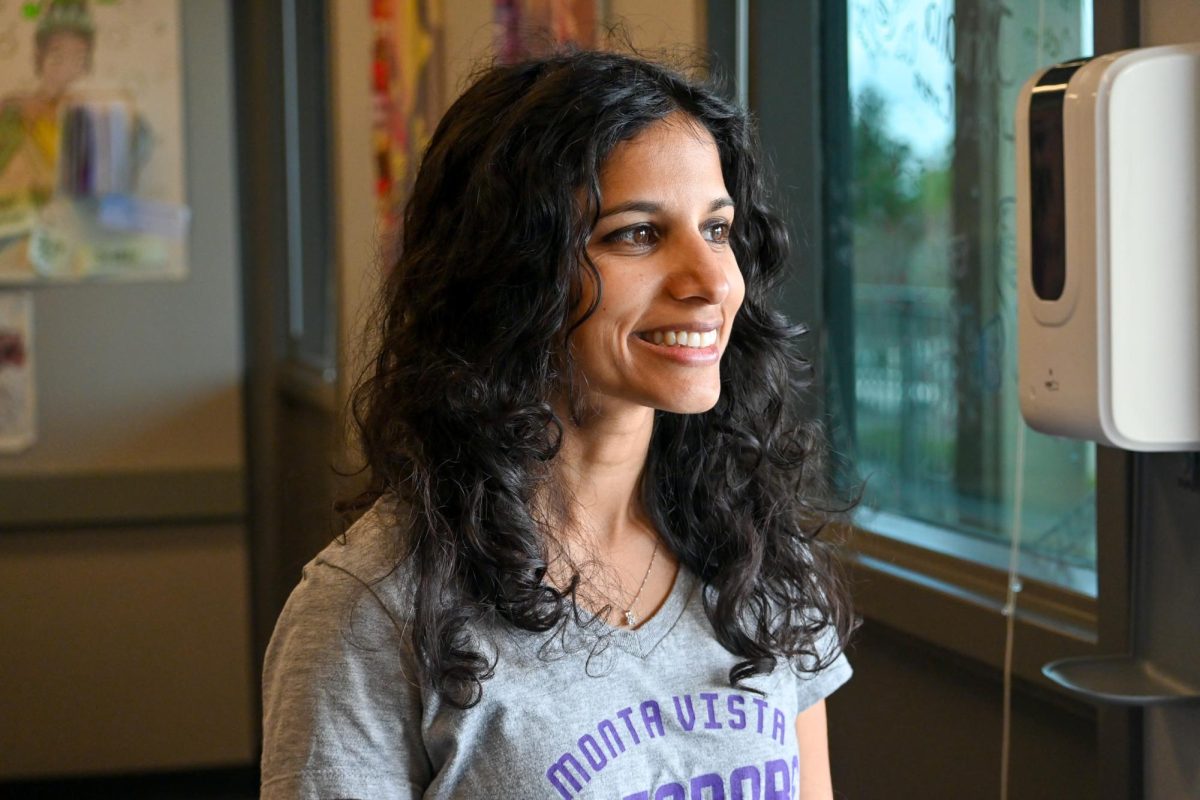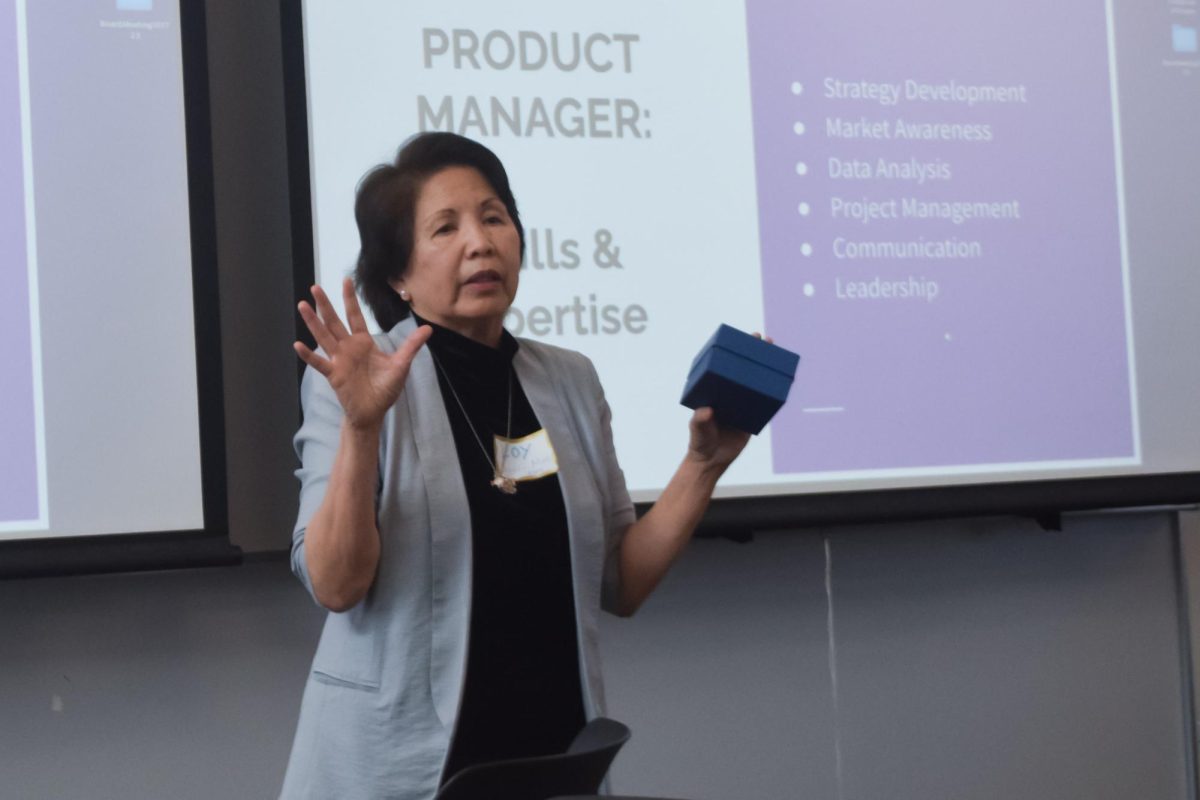Story by Malini Ramaiyer and Andrea Schlitt
It was around 7 p.m. on Nov. 15 when a silver Mercedes ran through a stop sign, sped down a side road and hit senior Rachel Poulo’s car. After almost swerving into oncoming traffic, Poulo’s car came to a stop.
A couple of minutes earlier, Poulo was thinking about the soccer tournament she had played on that day and her parents’ dinner party, where she was headed. Now, she was inside her car, hyperventilating and in shock.
Poulo waited a couple of minutes before she stepped outside of her car. A witness of the accident came out of his car and helped Poulo as they called the police and her parents.
Poulo was hit by a drunk driver and believes that she is lucky to have sustained no injuries, just a little soreness and a lot of shock.
“Going through what I’ve experienced, I don’t think that I could ever do that to someone else,” Poulo said, “and if I did I would be pretty devastated to know that I learned nothing from this situation.”
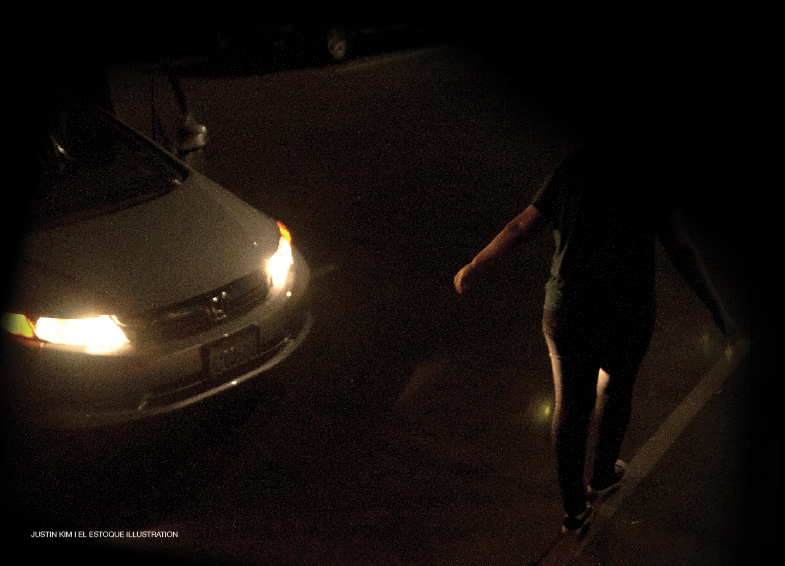 But having a drink and then driving comes with many implications with what is really considered drunk driving. 41 percent of students in a survey of 290 think that the legal blood alcohol content one can have while driving, if he or she is under 21, is 0.08 percent.
But having a drink and then driving comes with many implications with what is really considered drunk driving. 41 percent of students in a survey of 290 think that the legal blood alcohol content one can have while driving, if he or she is under 21, is 0.08 percent.
However, Deputy Lee Hickinbotham, a school resource officer for the Santa Clara County Sheriff’s department, explained that only if a driver is over 21, their BAC can be 0.08 percent. If a driver is under the age of 21 and any trace of alcohol is detected in their system, they will be arrested for drinking and driving. According to the law, drivers under 21 can only have one blood alcohol level — zero percent.
“Alcohol causes you to become impaired and you don’t make the best decisions, so you may feel like you’re just happy and you’re okay, but you’re not,” Hickinbotham said. “You will make that decision thinking you can drive, when in reality, you can’t.”
Respecting limits
For one anonymous MVHS senior, it all started with a beer the summer before junior year. That was his first experience with alcohol, and to him, drinking seemed like an inevitable rite of passage in high school.
“Our teenage years and age, we want to feel bad,” the senior said. “Just doing stupid stuff, whether it’s like trying to find alcohol, steal alcohol, drink with friends because it’s cool. ”
With more parties came more drinking. But the feeling of not being in control made him cut back since then, and now, he often is the designated driver for parties. The senior admits that while students drink underage knowing it’s illegal, there’s a line drawn when it comes to driving home drunk.
“That’s the stupidest thing anybody could ever do,” he said. “You literally could get a ride from anybody at the party. Not everybody drinks at parties.”
Even though this senior believes he found his limit, he explains that a lot of students still haven’t. They don’t know how many shots is too many. They don’t know when to stop. So when the senior attends parties now, he’s always watching out for his friends.
“Make sure they’re clean. If they do throw up, make sure everything’s out. [Give] them bread and water,” he said, as if running through a mental checklist.
For this senior now, it’s all about taking care of “his boys”. He keeps track of the number of shots they’ve had and tells them to stop when they’re pushing it. After parties, he drives everyone and his friend group usually sleeps over at his house.
It’s a taxing job, to be a designated driver, as he experienced at a party last Halloween. One of the senior’s friends had too much to drink and threw up on a bench. He wasn’t ready to go home himself. But since he had promised to drive her, he left the party and took her home.
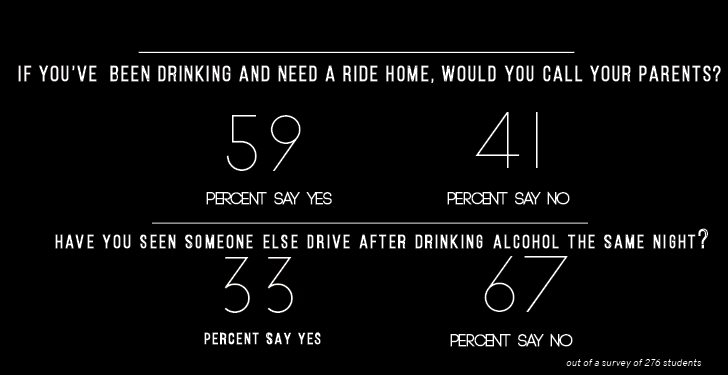 He drove to 7-11 on McClellan and bought her water. He gave her the water, and started to drive her home. Five seconds passed and she threw up in his car. He wiped it up with his old sweatshirt and kept driving. Another three minutes and she threw up again. After wiping it up, he dropped her home, gave her waterand bread, tucked her into bed and threw his sweatshirt away.
He drove to 7-11 on McClellan and bought her water. He gave her the water, and started to drive her home. Five seconds passed and she threw up in his car. He wiped it up with his old sweatshirt and kept driving. Another three minutes and she threw up again. After wiping it up, he dropped her home, gave her waterand bread, tucked her into bed and threw his sweatshirt away.
Avoiding a crash
To avoid situations like this senior’s, Hickinbotham has one suggestion — don’t drink.
“For any juvenile that says they know their limits, I would say that they don’t,” Hickinbotham said. “A lot of teenagers do think it’s a rite of passage to drink, but I think it’s more of a rite of passage to say no.”
When she was a freshman, senior May Liew would have been shocked to hear that people drink in high school. Now as a senior, she’s knows that it’s a norm for upperclassmen to drink, but she doesn’t feel the pressure to drink herself. However, Liew did admit that at parties where everyone seems to be drinking, having a friend who isn’t drinking as well helps her say “no”.
“I don’t typically drink, especially if I’m going to drive,” Liew said. “I’m never going to drink and drive just because I know the consequences of that.”
In third grade, Liew lost her best friend Sydney Ng to a car accident caused by a drunk driver. He swerved into the car and hit the side, injuring the mom and sister. Sydney didn’t make it.
“Every time I think of someone drinking and driving. I just remember what happened and that something that you think can be so minor can make a big impact in yours or someone else’s life,” Liew said. “The way that people just so casually talk about it sometimes, it scares me that one day… if you don’t really think about it before you take those next two shots, that could be the difference between life and death.”
Accelerating forward
Liew looks forward to college and life past high school. She believes that she’ll be okay with the drinking culture, as long as she remembers advice from her two older sisters and parents.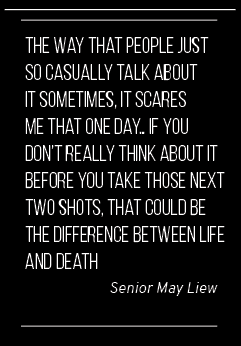
As for class of 2015 alumna Ketaki Malaviya, the transition between high school and college didn’t come as a shock. In high school, she could rely on close friends to take care of her at parties, give her a ride home and let her crash at their house. But even now, at UC Santa Barbara, she doesn’t have to worry about finding a driver at parties in case because she can just walk to her dorm, and she believes that she’s found her limit with time.
However, she’s observed that this isn’t the case for everyone in college and explained that it’s all about getting used to limits.
“I only felt comfortable doing it because it’s something that I’ve done before, and now I can say that I safely trust anyone [at college] to take care of me,” Malaviya said. “I feel like I saw cases of people who’ve never drank before and it was just really rough for them.”
Now, Malaviya believes that drinking is accepted as a social activity, a way to network and meet new people; whereas, in high school, it was seen as more of a rebellious act that carried a stigma.
Liew believes that going forward, she’ll be able to deal with drinking culture beyond high school.
“In elementary school, you have the red ribbon thing: ‘Drugs are bad, drinking is bad’,” Liew said. “I guess as I’ve grown, I’ve come to terms that people in society drink, people in society do drugs, but you should never do to the point where you’re going to put your life or someone else’s life at risk.”





















